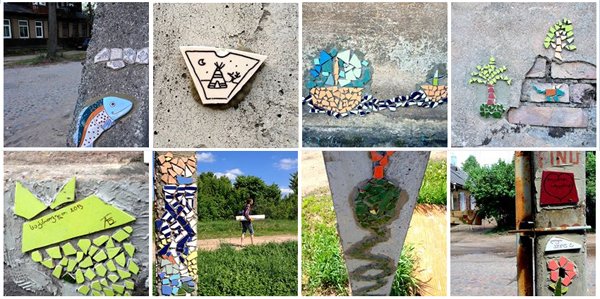Intercontexts – Civic and Cultural Education in disadvantaged local contexts (Grundtvig)
Title of the project: InterContext – Contributions of Civic and Cultural Education in Disadvantaged Local Contexts;
Partners: Zeitpfeil e.V. in cooperation with the experts of the regional Community Management Program (Germany, leader); Metropop! (France); ICE (Portugal), Intergracijas Centrs (Latvia); Urban games and research Lab “Laimikis.lt” (Lithuania).
Funded by: Grundtvig;
Duration: 2011-2013

About the project
The Grundtvig partnership “InterContext: Contributions of Civic and Cultural Education in Disadvantaged Local Contexts” explored how civic and cultural education promote social cohesion and local development in disadvantaged local contexts. The partners analysed and compared their working contexts and exchanged experiences and know-how in order to develop approaches to strengthen participation and cooperation and to train key competencies for participation.
At the local level, the partners launched practical solutions (demonstrators), involving local residents and addressing identified local challenges. In case of Vilnius (Šnipiškės neighbourhood as a case), Laimikis.lt has identified the lack of local network (community) and the lack of public space where social connections could grow. To solve this we studies the flows of users in the neighbourhood, identified the plots for possible public places (two of them) and started reanimating them by initating participatory actions. We also set and renewed information board and launched facebook group “Šnipiškiečiai” to support the flow of information and exchange within the neighbourhood. The actions in public spaces embraces: Street Mosaic Workshop, creating Letters “Šnipiškės” as a tool for rearranging the municipal plot that we identified as a potential public place into a place for community gatherings, Neighbours Picnic, etc. The best thing is that initiatives were supported by local residents, both children and adults, and continued growing. You may learn more about the set of solutions for the disadvantaged neighbourhoods and participatory planning here: placemaking tools for Šnipiškės at Behance.
Partners
Metropop! (France) with the aim of ethnological methods and volunteers made a research in Paris on the question of patrimony in “Banlieue”.
Zeitpfeil e.V. (Germany) explored the question of youth participation in Berlin neighbourhoods’ management in a study.
Intergracijas Centrs (Latvia) developed a training module for community managers in Latvia.
Laimikis.lt (Lithuania) developed a set of communication tools (community initiatives) designed for the strengthening of participation in the wooden neighbourhood of Snipiskes (Šnipiškės) in Vinius.
ICE (Portugal), through the project “Windows” explored an educational approach around memory and heritage in the village of Castelo de Vide
TOOLS DEVELOPED:
• We started with installing and redesigning the information boards in the neighbourhood to reach the residents, create the possibility for the residents who do not know each other to discuss common challenges and collect feedback on the proposed topics. This also contributed to the changing image of the area.

• Street mosaic workshop – is an ongoing participatory artistic action that contributes to the history of Šnipiškės neighbourhood, well-known for its ceramic workshops in the XVII-XVIII centuries. Using ceramic for mosaic decorations of the poles and facades in the neighbourhood, we enhance the neighbourhood’s identity. Also, this ongoing action created an open-air platform for local children and youngsters to join and contribute to their neighbourhood, overcoming the negative image of this area. Little by little, together, we created a mosaic route in Šnipiškės, opening it to the visitors.

• Letters “Šnipiškės” for community gatherings in public spaces – created by Laimikis.lt in cooperation with Tomas Umbrasas, these letters are a set of urban furniture for turning empty space into a place for community gatherings. Our main challenge was to make letters light but stable so that they would be movable but would now fall on kids :) The best evaluation is that residents and organisations started using these letters for every public event.

• To attract young artists to the neighbourhood and to develop a point of attraction, we arranged artistic residencies, cooperating with the owners of garages. We got a permission to draw on the garages, and the very first artwork was made by Vytautas Stakutis (Trafik). This artwork reflects the temporality of the neighbourhood, which found itself in the field of gambling of the developers’ interests.

• There are more tools in a Toolbox for Šnipiškės regeneration.
• Guidebook “Community and Neighbourhood Development: Informal Communication Tools and Cases” – based on our experience of regenerating public places and involving various age groups in the cultural revitalisation of the neighbourhoods, together with partners, we collected cases of informal communication and guidelines applicable for the participatory planning process. Publication: Kaisari-Ernst T., Lavrinec J., Niggemeier K. Community and Neighbourhood Development. Informal Communication Tools and Cases. Vilnius: Laimikis.lt, 2013. This publication is published in German as well by Zeitpfeil e.V.


